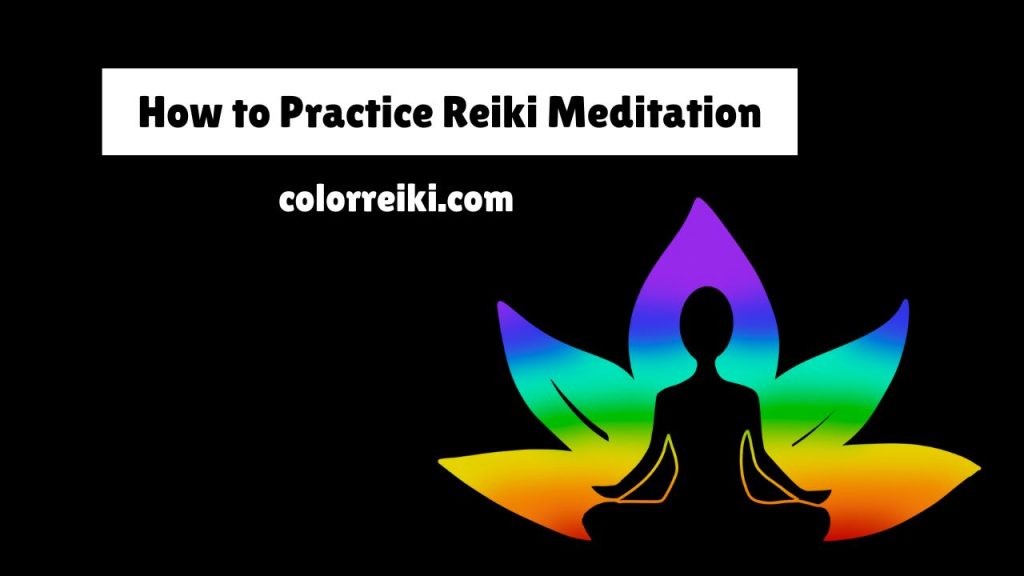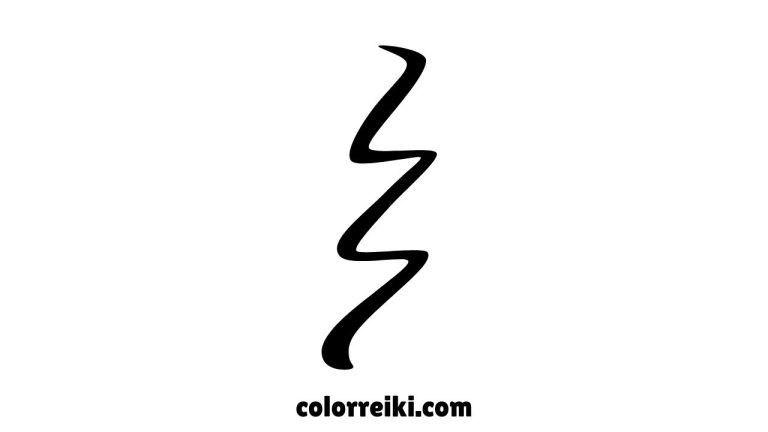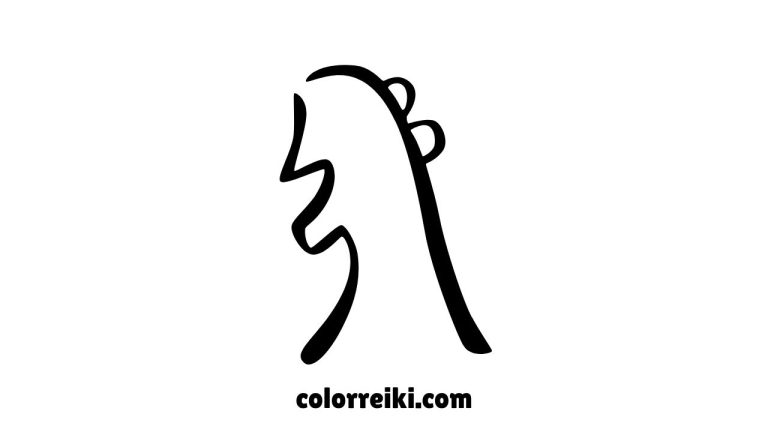Reiki Meditation: A Path to Inner Peace and Healing
Reiki meditation is a powerful spiritual practice that combines the ancient healing technique of Reiki with the transformative power of meditation. For anyone seeking peace, clarity, or healing, Reiki meditation offers a holistic approach to balance the mind, body, and spirit. Through deep relaxation and spiritual energy healing, this practice is accessible to beginners and seasoned practitioners alike.

What is Reiki Meditation?
At its core, Reiki meditation is a practice that involves channeling spiritually guided life force energy (Reiki) into the body while using meditation techniques to quiet the mind. This combination enhances the healing effects of Reiki, promoting physical, emotional, and mental well-being. For centuries, meditation has been a path to heightened spiritual awareness, and when integrated with Reiki, it becomes a profound way to access inner peace and self-awareness.
Unlike traditional meditation, which focuses on mindfulness or concentration, Reiki meditation adds the healing energy of Reiki, which is believed to flow through the practitioner’s hands and into the body’s energy centers, also known as chakras. This healing energy helps clear blockages, reduce stress, and promote emotional healing.
The History and Origins of Reiki Meditation
The practice of Reiki was founded by Mikao Usui in Japan during the early 20th century. His intention was to create a simple, yet profound, method to promote self-healing and personal development. Reiki translates to “universal life energy,” which is what practitioners believe flows through all living beings. By incorporating this into meditation, individuals can achieve higher states of consciousness and peace.
Guided Reiki Meditation
For those who are new to the practice or looking for a structured session, guided Reiki meditation is a great option. Many online resources, such as Reiki guided meditation YouTube videos or apps, offer step-by-step instructions. You can also attend a class or work with a Reiki meditation near me to experience it firsthand. There are specialized forms like animal Reiki meditation, which focuses on offering healing energy to pets or animals in need. Alternatively, some people enjoy the use of Reiki meditation for anxiety, which specifically targets stress and emotional overwhelm.
Benefits of Reiki Meditation
The benefits of Reiki meditation are vast, affecting the physical, emotional, mental, and spiritual aspects of our being. Some of the key Reiki meditation benefits include:
1. Stress Reduction and Relaxation
One of the most immediate benefits of Reiki meditation is deep relaxation. As you meditate and receive Reiki energy, your body releases stress and tension. This leads to a calm mind and relaxed body, which is essential for healing. Research has shown that practices like meditation and Reiki significantly reduce cortisol levels, which is the hormone responsible for stress.
2. Emotional Healing
Reiki meditation for self-healing is widely used for emotional healing. Whether you’re dealing with grief, anxiety, or emotional trauma, this practice can help you release suppressed emotions and achieve emotional balance. During reiki meditation for anxiety, for example, the calming energy helps soothe the mind and ease anxious thoughts, providing a sense of inner peace.
3. Physical Healing and Pain Relief
While Reiki meditation is not a substitute for medical treatment, many people report physical healing and pain relief after consistent practice. The Reiki energy helps stimulate the body’s natural healing processes, promoting faster recovery and easing chronic pain. It is particularly beneficial when combined with traditional medicine.
4. Enhance Self-Awareness and Clarity
Reiki meditation is a powerful tool for self-discovery. Clearing energy blockages and calming the mind, allows you to explore your inner self, connect with your higher purpose, and gain insight into your life’s journey. The clarity and focus you gain from reiki for clarity and focus can lead to greater success in personal and professional areas of your life.
5. Spiritual Growth
For those on a spiritual path, Reiki meditation offers a unique opportunity for growth. It helps deepen your connection with universal life force energy, aligning you with your higher self and spiritual guides. Through consistent practice, you may experience heightened intuition, greater empathy, and a stronger sense of purpose.
How to Practice Reiki Meditation
Practicing Reiki meditation doesn’t require any special tools or equipment, but it’s important to create a peaceful and serene environment. Here’s a simple reiki meditation script you can follow for a beginner’s session:
1. Prepare Your Space
Before beginning, ensure that the area where you plan to meditate is clean and free from distractions. Light a candle, burn some incense, or play soft reiki meditation music like the calming tunes from Yellow Brick Cinema Reiki Zen Meditation Music. You can also cleanse the space with sage or sweetgrass, following a Native American tradition of smudging to remove negative energy.
2. Set Your Intention
Close your eyes and take a few deep breaths. Set a clear intention for your self-reiki meditation session, such as “I release negative energy and welcome peace,” or “I open myself to healing.”
3. Use Reiki Symbols
If you’ve been attuned to Reiki, draw the Distant Healing symbol, Emotional/Mental symbol, and Power symbol on your hands. These symbols help amplify the Reiki energy you will channel during the meditation.
4. Begin the Meditation
Start by placing your hands on your legs or any comfortable position where you can allow Reiki to flow. Pay attention to your breath and the sensations in your body. If your mind wanders, gently bring your focus back to your breath.
5. Focus on Your Chakras
During a reiki chakra meditation, focus on each of the body’s seven energy centers (chakras). Visualize each chakra being filled with light as you direct Reiki energy to these areas. This helps clear blockages and restore balance in your energy system.
6. End with Gratitude
After about 10-30 minutes, depending on your preference, slowly bring yourself out of the meditation. Take a few deep breaths and express gratitude for the healing and peace you’ve received.
How to Perform Reiki Meditation
To begin your session of Reiki healing meditation, follow this simple guide:
- Sit Comfortably: Find a comfortable position, whether that’s on a chair, cushion, or lying down.
- Deep Breathing: Close your eyes and take deep breaths. Let your thoughts slow down as you focus on your breathing.
- Activate Reiki: If you’re familiar with Reiki, you can draw the Reiki symbols (such as the Emotional/Mental Symbol and the Power Symbol) over your body to activate the energy.
- Scan Your Body: As you meditate, pay attention to different areas of your body, especially places of tension. Allow the Reiki energy to flow there and relax those areas.
- Stay Present: If any thoughts arise, gently acknowledge them and let them pass, returning your focus to your breath and the healing energy.
- End Gently: After 10 to 30 minutes, end the meditation by taking three deep breaths and slowly opening your eyes. You may want to stretch lightly.
This simple practice of Reiki grounding meditation will leave you feeling relaxed and energized. Over time, regular practice will help you deepen your experience.
Reiki Meditation Techniques
There are various reiki meditation techniques that you can explore based on your needs and preferences. Whether you’re looking to balance your chakras, manifest your goals, or simply achieve inner peace, there’s a technique for you.
1. Gassho Meditation Reiki
In this traditional Japanese meditation, practitioners place their hands together in a prayer position (Gassho) and focus on the space between their palms. This method is often used at the beginning and end of Reiki sessions, helping to center the mind and prepare for healing.
2. Reiki Grounding Meditation
Grounding is a vital part of any meditation practice. In reiki grounding meditation, you focus on connecting with the earth’s energy, helping you feel centered and balanced. This practice is especially beneficial after an intense healing session.
3. Morning Reiki Meditation
Starting your day with a morning reiki meditation sets a positive tone for the rest of your day. By incorporating Reiki into your morning routine, you’ll feel energized, focused, and ready to handle whatever comes your way.
4. Reiki Healing Meditation for Sleep
For those struggling with insomnia or restlessness, reiki healing guided sleep meditation can help. By practicing before bed, Reiki can calm the mind, ease physical tension, and promote restful sleep. Many people find that listening to reiki-guided sleep meditation music on platforms like YouTube enhances the experience.
Reiki Meditation for Beginners
If you’re new to Reiki meditation, the process may seem overwhelming at first. But remember, there’s no right or wrong way to practice. Start with short sessions and gradually increase the time as you become more comfortable. You can also join a local Reiki meditation near me group or attend workshops at a Reiki wellness & meditation center for guidance and support.
1. Reiki Meditation for Self-Healing
One of the most profound uses of Reiki meditation is for self-healing. Reiki self-healing meditation is all about channeling energy into your own body, focusing on areas that need healing or balance. Many people incorporate it into their daily routine, whether it’s through a quick morning Reiki meditation or a more in-depth session before bed. To perform self-Reiki meditation, you simply place your hands on different parts of your body, allowing the Reiki energy to flow and heal you. Many people find that this practice leads to increased feelings of peace, strength, and resilience.
2. Reiki Chakra Meditation
Another popular form of Reiki meditation is Reiki chakra meditation. This practice focuses on balancing the seven chakras, or energy centers, of the body. Each chakra is associated with different physical, emotional, and spiritual aspects of life.
Here’s a brief guide:
- Root Chakra: Focus on grounding yourself. Place your hands on your lower back and hips.
- Sacral Chakra: Focus on creativity and emotional balance. Place your hands on your lower abdomen.
- Solar Plexus Chakra: Boost confidence and self-worth by placing your hands on your stomach.
- Heart Chakra: Promote love and compassion by placing your hands over your heart.
- Throat Chakra: Improve communication by placing your hands on your throat.
- Third Eye Chakra: Focus on intuition by placing your hands between your eyebrows.
- Crown Chakra: Promote spiritual connection by placing your hands on top of your head.
Using Reiki energy meditation with chakra work can lead to a deeper sense of balance and well-being.
Reiki and Meditation: A Harmonious Pair
Both Reiki and meditation share a common goal: achieving peace, clarity, and healing. When combined, they amplify each other’s effects, leading to a more profound experience. While meditation quiets the mind and promotes mindfulness, Reiki adds an element of spiritual healing that can elevate your practice to new heights.
Whether you practice yoga reiki meditation, attend a reiki circle meditation, or simply listen to reiki zen meditation music, you’ll find that Reiki and meditation complement each other beautifully. The peace and clarity gained from this practice can transform your life, helping you navigate daily challenges with grace and ease.
Conclusion
In conclusion, Reiki meditation is a powerful tool for anyone seeking inner peace, balance, and healing. By incorporating Reiki principles of meditation into your daily routine, you can reduce stress, promote physical healing, and achieve mental clarity. Whether you’re following a Reiki meditation script or performing self-Reiki healing, this practice can be deeply rewarding. And if you’re new to the practice, don’t hesitate to explore Reiki meditation for beginners through guided sessions or classes.
So take a moment, close your eyes, and let the Reiki energy flow through you. The journey to healing and self-awareness is just one meditation session away! By integrating Reiki meditation into your life, you open yourself to a world of healing and transformation. With consistent practice, you’ll experience the profound effects this technique has on your physical, emotional, and spiritual well-being.
FAQs
1. What is Reiki Meditation?
Reiki meditation combines the practice of Reiki (energy healing) with the calming effects of meditation. Reiki is a technique where healing energy is channeled into the body, while meditation focuses on quieting the mind. Together, these practices help balance the body’s chakras, reduce stress, and promote overall well-being. During Reiki meditation, you not only relax but also receive healing energy that can clear blockages, ease emotional pain, and bring mental clarity. This practice is simple and can be done by anyone, making it a powerful tool for self-care.
2. How to Do Reiki Meditation?
To practice Reiki meditation, find a quiet place and sit comfortably. Begin by taking deep breaths to calm your mind. Set a positive intention, like “I welcome healing and peace.” Place your hands gently on your body or in a prayer position. Focus on your breathing and allow Reiki energy to flow through your hands into your body. You can also visualize light entering your chakras for healing. This simple method of self-healing can last 10-30 minutes. Consistency is key, so practice regularly to feel its benefits.
3. What is the Difference Between Reiki and Meditation?
Reiki and meditation are both practices that promote relaxation and healing, but they are different in approach. Meditation is the act of quieting the mind, focusing on the breath, or using mantras to achieve a calm and mindful state. Reiki, on the other hand, involves channeling healing energy to the body’s energy centers or chakras. While meditation focuses more on mindfulness and mental clarity, Reiki involves spiritual healing and clearing energy blockages. When combined, they enhance each other’s benefits, but they can also be practiced separately.
4. What is Reiki Healing Meditation?
Reiki healing meditation is a form of meditation where the practitioner channels Reiki energy to heal physical, emotional, and mental blockages. During this practice, the individual may focus on specific areas of the body or chakras that need healing. It’s often used to reduce stress, promote emotional well-being, and support the body’s natural healing processes. This type of meditation can be done alone or with a Reiki practitioner, and it involves deep relaxation and energy work to balance and cleanse the body’s energy fields.
5. How Do I Start Reiki Meditation?
Starting Reiki meditation is simple. Find a quiet space where you won’t be disturbed. Sit comfortably and close your eyes. Take slow, deep breaths to calm your mind. Set an intention, such as “I am open to receiving healing.” If you are attuned to Reiki, place your hands on your body or in a prayer position. Focus on allowing the Reiki energy to flow through you. You don’t need to control the energy; just relax and let it happen. Begin with short sessions of 10-15 minutes, and gradually increase the time as you feel comfortable.
6. How Does Reiki Work?
Reiki works by channeling universal life force energy through the practitioner’s hands into the recipient’s body. This energy helps to balance the body’s natural energy flow and supports the body’s natural healing process. When Reiki energy flows into the body, it targets areas of imbalance, such as blocked chakras or energy centers. It helps to clear negative energy, reduce stress, and promote healing on physical, emotional, and mental levels. Although not a substitute for medical treatment, Reiki is often used to complement traditional therapies for a more holistic healing experience.
7. Which is Better: Reiki or Meditation?
Neither Reiki nor meditation is “better” because they serve different purposes and can complement each other. Meditation is excellent for calming the mind, improving focus, and reducing stress. It helps with mental clarity and mindfulness. Reiki, on the other hand, is more focused on energy healing and restoring balance to the body’s chakras. If you are seeking spiritual and emotional healing, Reiki might be more effective. However, combining both practices can offer the best of both worlds—mental peace through meditation and energy healing through Reiki.






